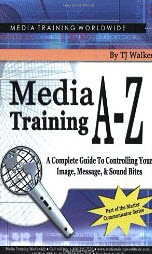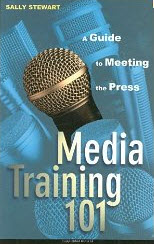Source of article Jury Insights.
 Communicating with the Media
Communicating with the Media
Rules of Professional Conduct
The Washington State Bar Association’s Rules of Professional Conduct (RPC Rule 3.6) discusses the limits of attorney involvement in trial publicity.
Washington Bar Rules of Professional Conduct
Although I have not researched the rules of other Bar Associations, my guess is that there is some similarity.
Prejudicial Commentary versus Free Speech
- (a) A lawyer who is participating or has participated in the investigation or litigation of a matter shall not make an extrajudicial statement that the lawyer knows or reasonably should know will be disseminated by means of public communication and will have a substantial likelihood of materially prejudicing an adjudicative proceeding in the matter.
Rule 3.6 tends to focus on criminal cases, alluding particularly to the behavior of the prosecutor, describing that the attorney may discuss factual and nonprejudicial matters with the media.
In paragraph (c) the Rule goes on to clarify (this time appearing to speak to the criminal defense attorney) that an attorney may “mitigate” misleading prejudicial material that has already appeared in the media.
(c) Notwithstanding paragraph (a), a lawyer may make a statement that a reasonable lawyer would believe is required to protect a client from the substantial undue prejudicial effect of recent publicity not initiated by the lawyer or the lawyer’s client. A statement made pursuant to this paragraph shall be limited to such information as is necessary to mitigate the recent adverse publicity.
The Rule’s comment section discusses the intention of the Rule as an attempt to “strike a balance between protecting the right to a fair trial and safeguarding the right of free expression.” The comment touches on conflicting issues that may arise due to media publicity including guilt of defendants, the presumption of innocence, and the right of the public to have access to legal proceedings.
The Rule intends to set forth: [3}… a basic general prohibition against a lawyer’s making statements that the lawyer knows or should know will have a substantial likelihood of materially prejudicing an adjudicative proceeding. Recognizing that the public value of informed commentary is great and the likelihood of prejudice to a proceeding by the commentary of a lawyer who is not involved in the proceeding is small, the Rule applies only to lawyers who are, or who have been involved in the investigation or litigation of a case, and their associates. Working within the Limitations Given the limitations set by [Washington’s] Rule 3.6, the litigator needs to know how to appropriately work with the media. Media Training References I have been reviewing several books on media training and public relations more generally and have found these two short paperbacks to be very helpful: Media Training A-Z by TJ Walker, and Media Training 101 by Sally Stewart. In future posts, I will discuss how to prepare for and present oneself at interviews. I think you will find great similarities between preparation for media interviews and witness preparation for deposition and trial. The Phone Call Inquiry In this post, I will discuss how to manage a phone call inquiry from the media. Litigators should expect to receive calls from the media for commentary on their own case, or some other attorney’s case. It is important that you do not feel obligated to answer questions posed by the media at the time that you receive this phone call. This is not your only opportunity to answer. Make sure that you give yourself some time to prepare for the interview. In this initial phone call, however, nail down what it is that the journalist is interested in, and discover the deadline and publication parameters. Set an appointment for the place and time frame of the interview. Do not ask for questions to be given to you in advance, because it will look amateurish and may give an impression of defensiveness or anxiety. TJ Walker points out the axiom that litigators should use in witness preparation, “you can’t control the questions, you can only control the answers.” Sally Stewart points out the importance of understanding the mindset of journalists. Reporters are neither your friends nor your enemies. Most journalists do not earn a great deal of money and are motivated by something other than money. Journalists want their stories recognized. They want to feel “part of the action” and they are on the lookout for “drama.” Stewart reminds that there is an old saw that goes – “When a dog bites a man, nobody cares. When a man bites a dog- that is news.” Reporters especially like to expose wrongdoing and approach their writing with broad stroke black and white morality plays that Ms. Stewart refers to as “kindergarten justice.” The media is not out to get you, but is definitely out to find an interesting angle that may result in misrepresenting you. You can learn to prepare for and manage the media, but there is no point in whining about it. Remember when Sarah Palin whined about the “lame stream” media attacking her with “gotcha questions”? Ms. Palin was trying to use the media to elevate herself in the public perception, and became furious whenever a journalist did not just report her talking points. If you understand where the media is coming from and you prepare for it, you will be able to appropriately see your relationship with the media as symbiotic, rather than seeing the media as predatory. In future posts, I will discuss how to prepare your message, communicate your message and how to present yourself in different types of settings. Alan J. Cohen Ph.D. LLC 

